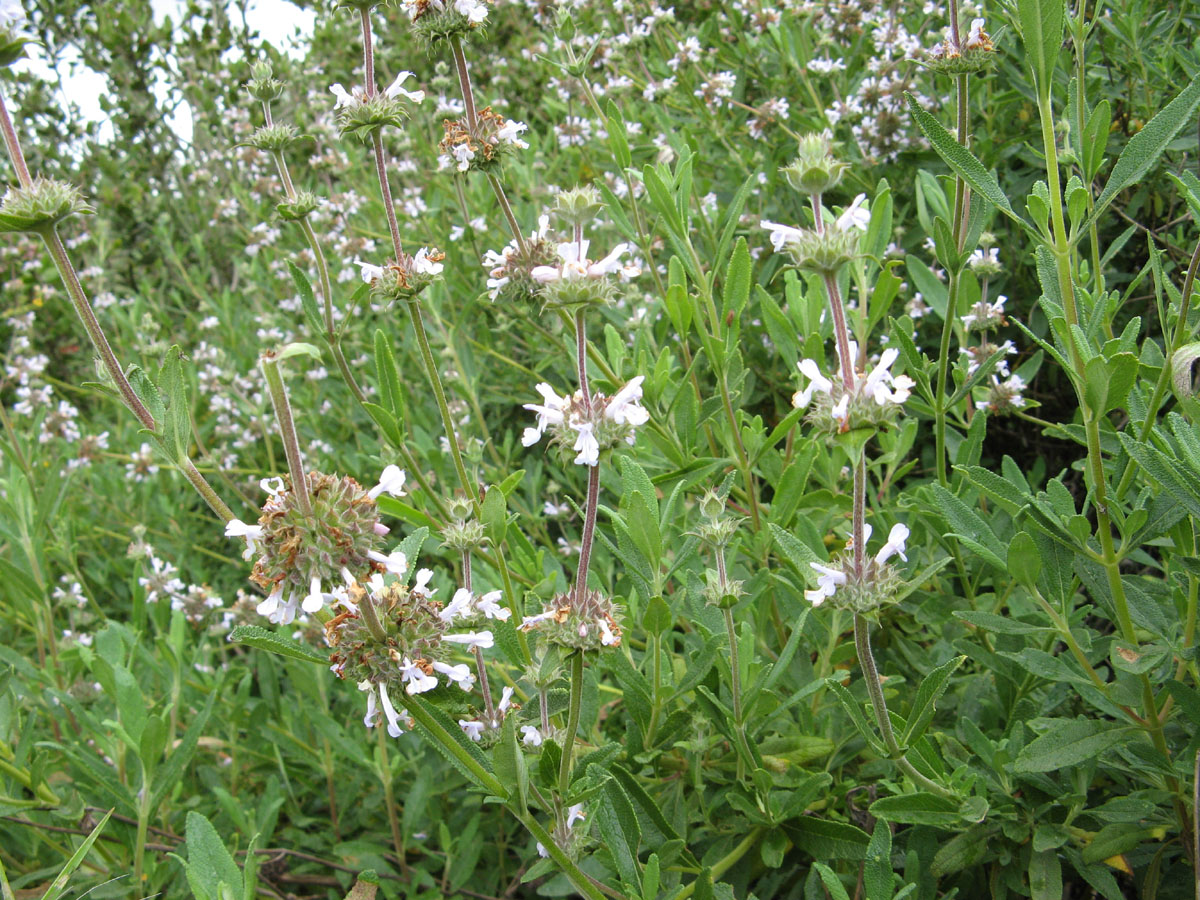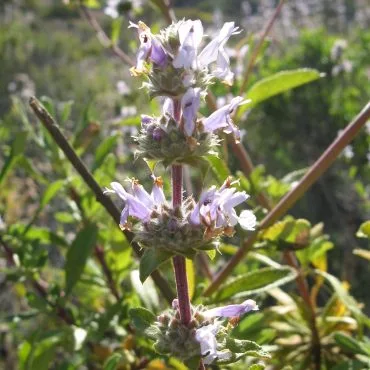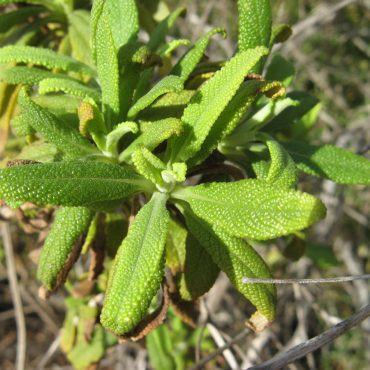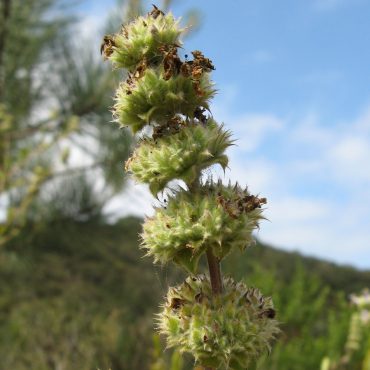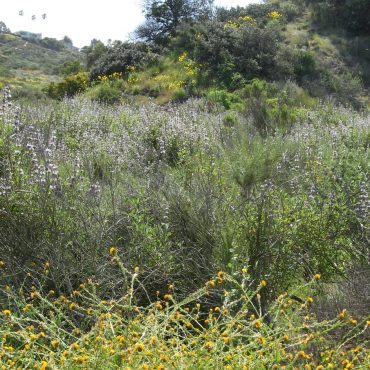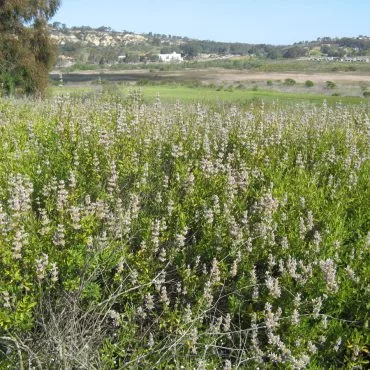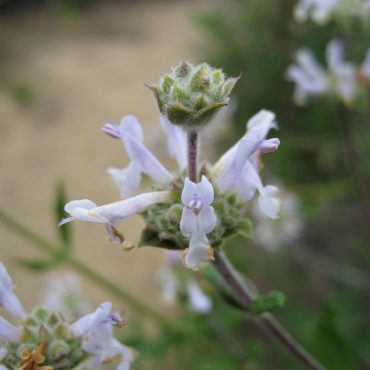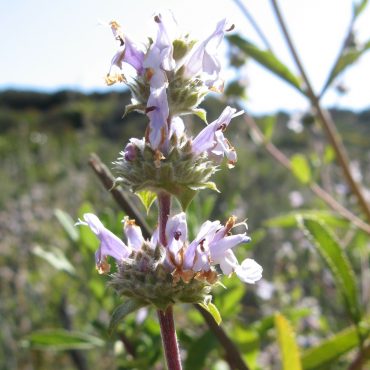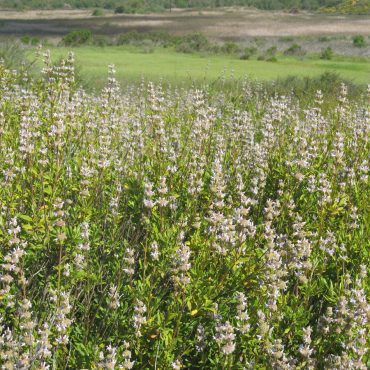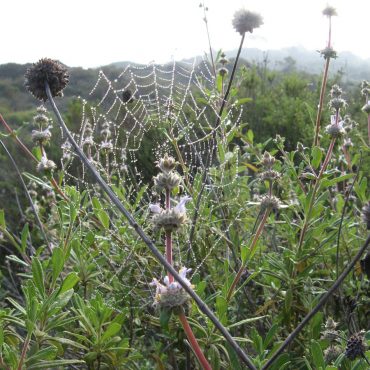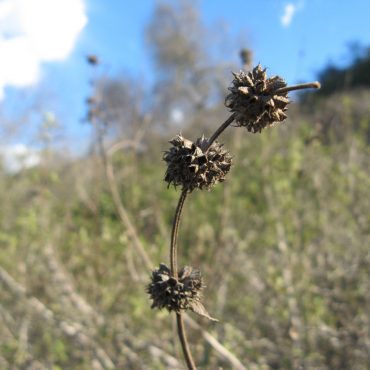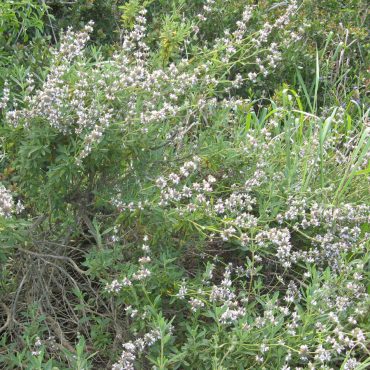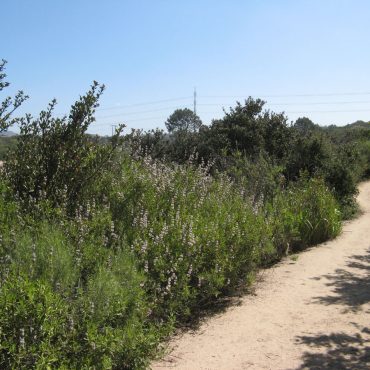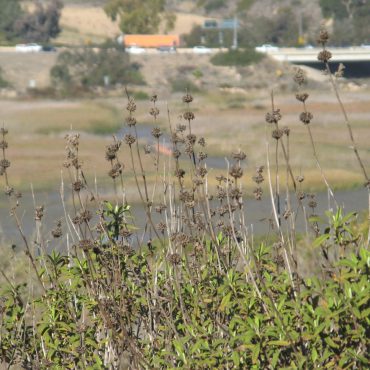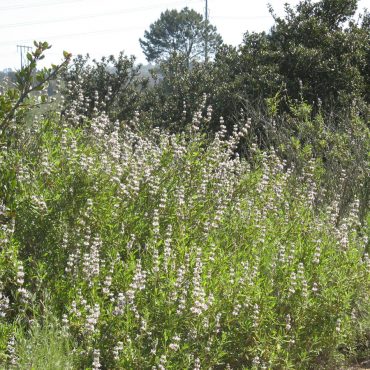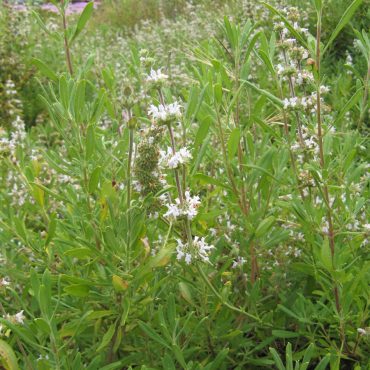Ecology
Like many plants of the drought-adapted coastal sage scrub, black sage is seasonally dimorphic, producing larger leaves during the wet periods and replacing them with smaller leaves during the dry months. The area of a summer leaf is about 20% that of a winter leaf.6 The root system is branched and fibrous; most roots are within 5 inches (13 cm) of the soil surface, but they may extend laterally twice the height of the parent plant.38 This root structure allows black sage to take advantage of early winter rains.5
Although the abundant nectar attracts a large variety of pollinators, from small solitary bees and flies to butterflies and hummingbirds, the relatively narrow-necked, long tube of the black sage flower deters the larger pollinators.72 The pollen of black sage begins to mature before the female style is receptive, reducing the chance of self-fertilization.72 Each fertile anther is fused at the base to a sterile one, forming an L shape. As an insect enters the corolla tube, it brushes against a shorter stamen which acts as a trigger, bending the fertile stamen down to touch the insect’s back, thereby depositing pollen for transport to another flower.11The pollen of black sage begins to mature before the female style is receptive, reducing the chance of self-fertilization.72
Populations of black sage are decreasing due to loss of habitat, and competition from non-native grasses which are favored by increasing fire frequency and increasing nitrogen input.11 The plant is also sensitive to air pollution from sulphur dioxide and possibly ozone5 and has been recommended for use as a pollution monitor.5

